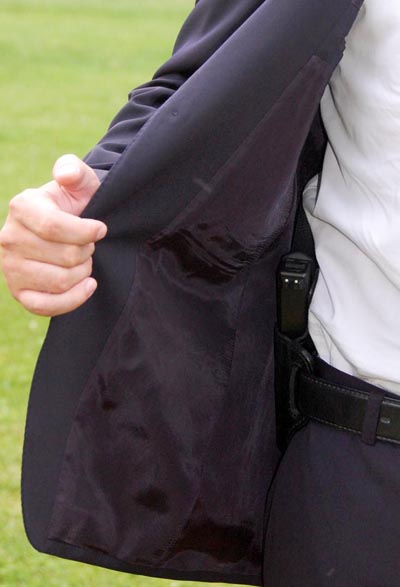The Role and Importance of Pharmacies in Modern Healthcare are a vital component of the healthcare system, offering more than just medication. They serve as a bridge between patients, doctors, and healthcare education, contributing to patient well-being through both the provision of medicines and a range of health services. With the evolution of medical science and increasing healthcare demands, pharmacies have expanded their roles significantly. This article will explore the various roles of pharmacies, the types of pharmacies, and how they impact patient care.
1. Understanding Pharmacies: Definition and Purpose
A pharmacy is a healthcare facility where medicinal drugs are prepared, dispensed, and often recommended to patients. Pharmacists—trained healthcare professionals with expertise in medicines and their effects—are responsible for ensuring that patients receive the correct medication in the proper doses. Pharmacies not only dispense prescription medications but also provide over-the-counter (OTC) drugs, health advice, immunizations, and other essential health services.
The primary purpose of a pharmacy is to promote safe and effective drug use. This goal is achieved through clinical services like medication management, health screenings, immunizations, and counseling, all of which enhance patient care and reduce the likelihood of adverse drug reactions.
2. Types of Pharmacies
There are various types of pharmacies, each specializing in different areas of healthcare. Here are some of the most common ones:
Community Pharmacies
Community pharmacies, also known as retail pharmacies, are typically found in neighborhoods, shopping malls, and hospitals. They are easily accessible to the general public and offer a broad range of services, including prescription refills, health screenings, and vaccinations. Community pharmacies play an essential role in patient education and are often a first point of contact for individuals seeking medical advice.
Hospital Pharmacies
Located within hospitals, hospital pharmacies focus on managing medications for inpatients and outpatients. Hospital pharmacists collaborate closely with doctors and nurses to ensure that patients receive the most appropriate treatments. They manage complex drug regimens and monitor patients for any adverse reactions or drug interactions, which is critical in a hospital setting where patients may be on multiple medications.
Clinical Pharmacies
Clinical pharmacies provide more direct patient care, often in clinics, long-term care facilities, or hospitals. Pharmacists in this setting focus on optimizing medication therapy and improving patient outcomes. They work with healthcare teams to develop treatment plans, adjust medications, and monitor patient progress.
Specialty Pharmacies
Specialty pharmacies focus on dispensing and managing medications for chronic, complex, or rare conditions, such as cancer, HIV, and multiple sclerosis. These medications often require special handling, monitoring, and administration. Specialty pharmacies provide personalized patient support, helping individuals manage side effects, adhere to their medication regimens, and navigate insurance requirements.
Compounding Pharmacies
Compounding pharmacies customize medications to meet the specific needs of individual patients. They create specialized formulations by altering standard medication forms, such as creating liquid versions of pills for patients who have difficulty swallowing or combining ingredients to avoid allergens. Compounding pharmacies are especially helpful for pediatric, geriatric, and veterinary patients.
3. Key Roles and Services Provided by Pharmacies
Pharmacies have evolved beyond simply dispensing medications. They now offer a wide range of services that improve patient care and support public health efforts. Some key roles and services include:
Medication Management and Counseling
One of the most critical services provided by pharmacies is medication management. Pharmacists counsel patients on how to take their medications correctly, ensuring proper dosages and timing. They also review patients’ medication histories to check for possible interactions between drugs. Proper medication management can prevent adverse drug reactions and improve the effectiveness of treatment.
Health Screenings and Preventive Services
Many community pharmacies offer health screenings for conditions such as high blood pressure, diabetes, and cholesterol. These screenings help in early detection and enable patients to seek medical attention before conditions worsen. Additionally, pharmacies often provide immunizations for diseases like influenza, COVID-19, and pneumonia, which helps prevent the spread of infectious diseases and contributes to community health.
Patient Education and Support
Pharmacists play a vital role in educating patients about their health, treatment options, and preventive care. They provide guidance on managing chronic diseases, using medical devices, and maintaining a healthy lifestyle. By fostering patient understanding, pharmacists help individuals make informed decisions about their health, which is especially important for managing long-term conditions.
Emergency Contraception and Family Planning
The Role and Importance of Pharmacies in Modern Healthcare often provide access to emergency contraception, birth control, and other family planning products, along with counseling services. This role is especially important in communities with limited access to healthcare providers. By offering such services, pharmacies support reproductive health and help reduce the risk of unintended pregnancies.
4. The Impact of Pharmacies on Patient Care
Pharmacies significantly impact patient care by ensuring safe and effective use of medications and providing access to healthcare services. Their accessibility and convenience make them an essential part of everyday healthcare, especially in rural or underserved areas where other healthcare facilities may be limited. Some of the key ways pharmacies contribute to patient care include:
Increased Access to Healthcare
With pharmacies located in nearly every community, they make healthcare more accessible, especially for those in remote or underserved areas. Patients can easily get prescriptions filled, receive health advice, and access preventive services without scheduling a doctor’s appointment, reducing the strain on primary healthcare facilities.
Improved Medication Adherence
Pharmacists play a crucial role in ensuring that patients adhere to their medication regimens. Through counseling, reminders, and personalized support, pharmacists help patients understand the importance of consistency in medication usage, which is critical for managing chronic conditions and improving health outcomes.
Reducing Healthcare Costs
By promoting preventive care, managing chronic diseases, and ensuring proper medication use, pharmacies help reduce overall healthcare costs. Patients who have access to regular medication reviews, health screenings, and counseling are less likely to experience complications that require costly medical interventions.
5. Challenges Faced by Pharmacies
Despite their essential role in healthcare, pharmacies face several challenges that can hinder their ability to provide quality care. Some of these challenges include:
Regulatory Hurdles and Compliance
Pharmacies are subject to strict regulations, which vary by country and state. Compliance with these regulations requires significant resources and can sometimes hinder the ability of pharmacies to offer certain services. For example, some pharmacies may face restrictions on offering specific medications or providing telehealth services.
Workforce Shortages
The pharmacy sector is facing a shortage of qualified pharmacists and support staff, which can affect service quality and accessibility. This shortage is particularly problematic in rural areas, where there may be fewer resources to attract and retain skilled professionals.
Financial Pressures and Reimbursement Issues
Many pharmacies, particularly small, independent ones, struggle with low reimbursement rates from insurance companies and rising costs of medications. These financial pressures can limit the services they provide and, in some cases, force them to close, further reducing access to healthcare.
6. The Future of Pharmacies
As healthcare continues to evolve, pharmacies are expected to play an even larger role in patient care. With advances in technology, pharmacies are increasingly offering telepharmacy services, allowing patients to receive consultations and medication advice remotely. Pharmacies are also likely to play a more significant role in chronic disease management, preventive care, and personalized medicine.
The integration of artificial intelligence (AI) and data analytics in pharmacies could enhance medication management and enable more tailored patient support. For instance, AI could help pharmacists predict potential drug interactions or suggest alternative therapies based on individual patient profiles.
Conclusion
The Role and Importance of Pharmacies in Modern Healthcare are indispensable in modern healthcare, providing accessible, convenient, and comprehensive services that go beyond traditional medication dispensing. They play a vital role in medication management, preventive care, and patient education, significantly impacting community health and individual patient outcomes. Despite challenges, the future of pharmacies looks promising as they continue to adapt and expand their services to meet the evolving needs of patients and the healthcare system at large.


 Health7 months ago
Health7 months ago
 Business7 months ago
Business7 months ago
 Culture8 months ago
Culture8 months ago
 entertainment8 months ago
entertainment8 months ago
 entertainment8 months ago
entertainment8 months ago
 entertainment8 months ago
entertainment8 months ago
 Tech8 months ago
Tech8 months ago
 Other9 months ago
Other9 months ago





